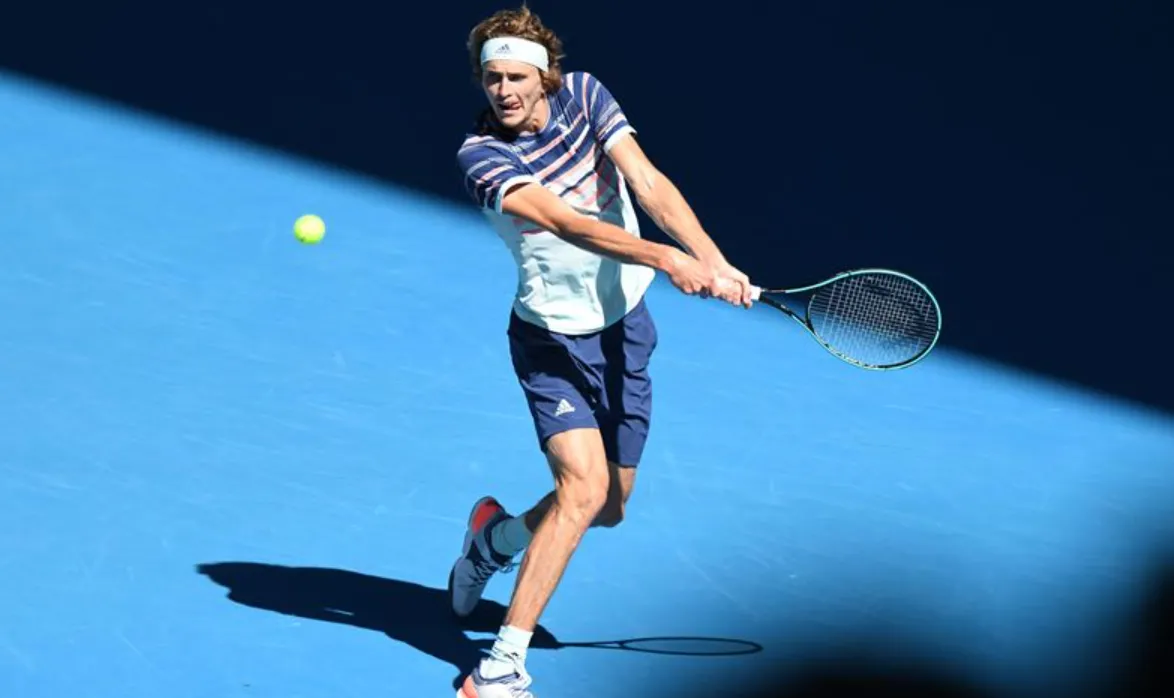Grand Slam Events: The Ultimate Stage for Tennis Betting
Grand Slam events in tennis represent the most prestigious battlegrounds for both players and bettors. With unmatched intensity, unique surfaces, and historical relevance, these tournaments define the sport’s elite.
Each competition offers its own atmosphere—from the scorching heat of Melbourne to the clay dust of Paris, the elegance of Wimbledon, and the hard-court drama of New York. For bettors, these tournaments create strategic opportunities: longer matches, player fatigue, surface-specific skills, and major upsets redefine the outcome every day.
Whether it’s forecasting a five-set thriller or spotting an underdog poised for glory, Grand Slam events hold a unique place in the sports betting world. This article dives into the what are the Grand Slam tennis events, the distinct identity of each Slam, their betting potential, and why they remain the ultimate proving ground for tactical predictions.

Introduction: The Significance of Grand Slam Tournaments
Grand Slam events are the cornerstone of professional tennis, with each tournament providing a pivotal moment in the annual tennis calendar. These tournaments do not only crown champions—they also define legacies, mark rivalries, and shape the history of the sport. The tennis Grand Slam consists of what 4 events gather the best players on the biggest stages, amplifying every serve, return, and rally under global scrutiny.
The appeal of Grand Slam tournaments also stems from their historical value. Since the early 20th century, these events have evolved into cultural and sporting milestones. Each Slam features distinct traditions, dress codes, and fan engagement, contributing to its unique flavor. With millions watching around the world, they provide unmatched betting exposure due to sheer match volume, player variety, and surface-driven dynamics.
Bettors find the Grand Slam events especially attractive due to their consistent format and deep player fields. Unlike standard ATP or WTA events, Grand Slams include 128-player draws, offering more upsets, comeback stories, and data to analyze. From opening rounds to dramatic finals, these tournaments keep every tennis analyst and fan on edge throughout the fortnight.
The Four Major Grand Slams
The Australian Open
Held annually in Melbourne during January, the Australian Open opens the tennis season with flair and challenge. Played on hard courts, this tournament is renowned for its scorching summer temperatures, which test the physical endurance of even the fittest athletes. It’s the first chance for players to gain early momentum—and for bettors to evaluate off-season form.
The tournament is played on a relatively fast surface, favoring aggressive baseliners and strong servers. However, the humid environment can lead to unpredictable conditions, especially during night matches. Betting on Australian Open matches often requires analyzing early-season performance trends, recent exhibition results, and endurance.
As the first of the Grand Slam tennis events, it often sets the tone for the year. Historically, Australian Open champions tend to carry confidence into subsequent Slams. It’s also known for breakout runs by lesser-known players, making underdog betting strategies particularly useful during the first week.
The French Open (Roland-Garros)
The French Open, also known as Roland-Garros, is the only Grand Slam event played on clay. Hosted in Paris from late May through early June, it presents unique challenges: longer rallies, slower ball speeds, and demanding footwork. Clay courts favor patience and consistency, rewarding those who can construct points strategically rather than seek quick winners.
Betting on golf Grand Slam events requires deep knowledge of clay-court specialists—players whose movement, stamina, and spin-oriented games thrive on this surface. The men’s matches, played in a best-of-five format, often stretch for hours, making physical conditioning a key betting metric. Predicting outcomes here involves understanding rally tolerance and defensive ability.
Roland-Garros has produced some of the most dominant champions in history, such as Rafael Nadal. Still, the unpredictable weather and unique court speed make it a playground for surprising upsets. For sharp bettors, the Grand Slam events tennis calendar isn’t complete without exploiting the intricacies of this clay-court masterpiece.

Wimbledon Championships
Wimbledon stands as the most iconic of all tennis Grand Slam events. Played in London on grass courts every July, it brings a refined atmosphere, complete with strict dress codes and Royal Box appearances. Grass, as the fastest surface in tennis, creates unique match dynamics with short rallies, low bounces, and an emphasis on serving and net play.
The fast conditions suit serve-and-volley players and powerful strikers, especially those with strong first serves and quick reflexes. Bettors need to adjust their expectations here: a lower-ranked player with a strong serve can push top seeds to the limit. This adds significant volatility to early-round predictions.
Strategically, Wimbledon requires close analysis of recent grass-court performance, as the short grass season offers limited preparation. With tradition deeply embedded into every match, Wimbledon betting is as much about respecting history as it is about understanding surface trends. What are the Grand Slam events in tennis?—Wimbledon is the crown jewel of them all.
The US Open
Closing the Grand Slam events calendar from late August to early September, the US Open takes place in New York on acrylic hard courts. Known for its electric atmosphere, night matches, and loud fans, this Grand Slam offers a gritty, high-energy environment that challenges both mental and physical endurance.
The hard court here differs slightly from Melbourne’s version, being slightly faster and often producing more bounce. The unpredictability of the conditions—combined with the fatigue from a long tennis season—makes betting on the US Open especially intriguing. Late-season injuries, fatigue, and mental burnout often influence match outcomes more than rankings do.
As one of the Grand Slam events 2025 closing chapters, the US Open provides a final shot at glory and ranking boosts. Bettors often exploit this event by targeting in-form players who have momentum post-Wimbledon or those historically strong in American tournaments. For many, the US Open is where legends are either made—or unmade—on court.

Why Grand Slam Tournaments Are Essential for Bettors
Grand Slam tournaments are the pinnacle of tennis, attracting top players and offering some of the most lucrative and competitive betting opportunities. For bettors, these prestigious events provide a unique chance to analyze the form, tactics, and strategies of the world’s best, as well as to take advantage of market fluctuations and betting odds that often differ from regular tour events.
With their rich history, high stakes, and intense global attention, Grand Slams offer a wealth of opportunities for informed betting, making them an essential part of any tennis betting strategy.
Extended Matches & Best-of-Five Set Format (Men’s)
One of the most defining features of men’s Grand Slam matches is the best-of-five format. This gives stronger players more time to recover from slow starts, reducing the frequency of fluke wins and increasing the chance for comebacks. Bettors benefit by analyzing trends like five-set win percentages and physical recovery rates.
Extended matches also offer greater in-play betting value. Momentum shifts, medical timeouts, and tactical changes are common, especially in second-week showdowns. These factors make the Grand Slam events a goldmine for bettors who study match flow and fitness indicators over surface-specific outcomes.
Additionally, five-set matches can influence betting markets for over/under total games, set betting, and live odds. The longer duration offers multiple windows for re-entry and dynamic prediction models—particularly valuable in second-round and quarterfinal clashes.
Influence of Different Playing Surfaces
Each Grand Slam features a different surface: hard, clay, or grass. This significantly affects how players perform and how bettors should interpret form. Surface compatibility can turn a mid-ranked player into a title contender—or expose a top seed’s weakness.
For instance, some players thrive on clay but struggle with grass transitions. Others possess adaptable skills that suit multiple surfaces. Recognizing these patterns is key to exploiting Grand Slam events odds. Historical records by surface type are often more insightful than current rankings.
Furthermore, surface impact extends beyond playstyle. Weather conditions, bounce patterns, and match length vary, altering the effectiveness of certain strokes. Betting strategies must be customized to fit each surface’s rhythm, whether it’s long rallies on clay or serve-dominated games on grass.

Surprising Underdog Wins & Early-Stage Shocks
Despite being elite tournaments, Slam tennis events frequently produce surprising outcomes in early rounds. Top players may struggle with match rust, poor conditioning, or unfavorable draws. For bettors, spotting potential upsets involves studying qualifiers, wildcard entrants, and rising stars with favorable matchups.
These early-round surprises offer high-value odds and often come from players with a proven track record at specific Slams. Knowing how many events are there in the Grand Slam of tennis allows bettors to focus on patterns that repeat year to year, such as specific top seeds falling early at the US Open or slow starts in Australia.
Understanding historical shock results in each Slam sharpens prediction accuracy. Combining player profiles, court type history, and first-week dynamics makes betting against the favorites not only possible—but often profitable.
Conclusion: The Importance of Grand Slam Events in Betting
Grand Slam tournaments represent more than just tennis titles—they offer layered complexity, diverse surfaces, and unmatched betting volume. With each Slam presenting different environmental, physical, and psychological challenges, bettors must adapt constantly. The structure of Grand Slam track events like these allows for strategic engagement, from early match surprises to deep-run consistency.
Every surface favors a different style. Every match has unique dynamics. The longer formats, larger draws, and international coverage make Grand Slams the most fertile ground for betting innovation and strategy. Whether you’re tracking Grand Slam events or following the 5 Grand Slam tennis events, the tennis circuit remains one of the most nuanced arenas for sports wagering.


